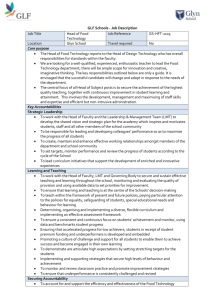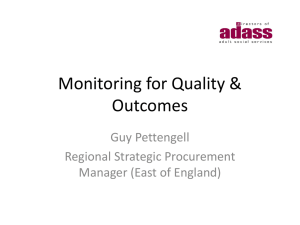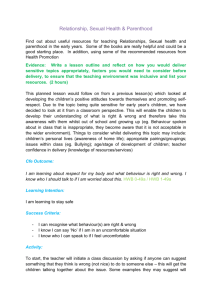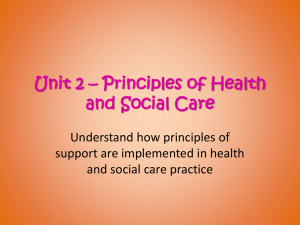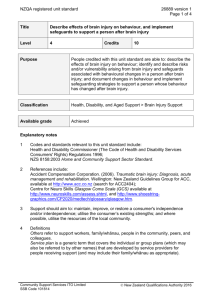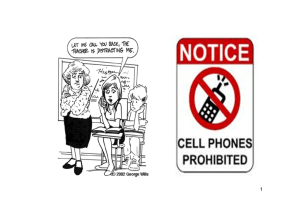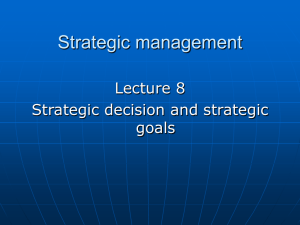Safeguarding best practice for visitors to settings
advertisement
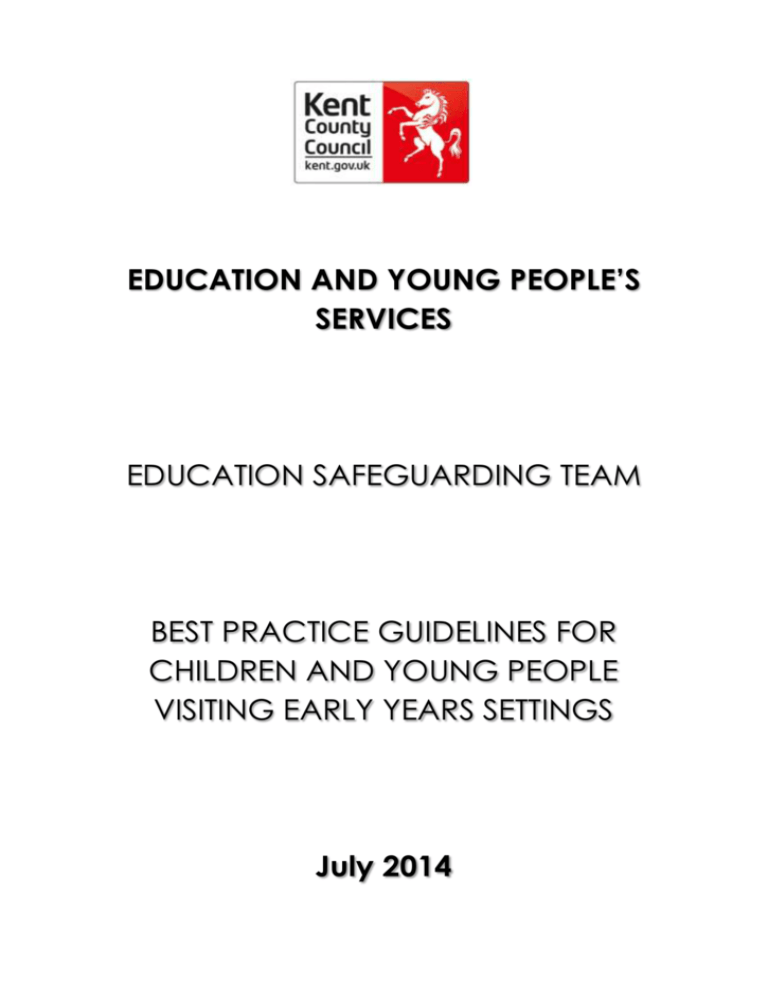
EDUCATION AND YOUNG PEOPLE’S SERVICES EDUCATION SAFEGUARDING TEAM BEST PRACTICE GUIDELINES FOR CHILDREN AND YOUNG PEOPLE VISITING EARLY YEARS SETTINGS July 2014 The Education Safeguarding Team (EST) have produced this guidance for Early Years Settings to assist staff in making suitable arrangements to ensure the children in their care are safeguarded in the event a child or young person is present at the setting who would not normally be so. This is in response to direct requests from staff with specific child protection responsibilities and also as a result of the EST becoming aware of a number of issues of concern which have arisen. The EST are aware that on occasion staff members own children accompany them to work, for example through illness, during school holidays or because they have been excluded from school. Although this is neither ideal nor best practice, it is recognised that this is common practice for some early years provisions across Kent and at times is seen as necessary due to staff/children ratios. Many settings will also regularly have young people carrying out work experience at the setting, to give students the opportunity to explore a career in child care. Whilst it is important students are able to continue to experience work placements, steps need to be taken to ensure these young people are suitable to work with children. Although it may be difficult for some people to accept, children and young people do engage in behaviours which are abusive towards other children. This should always be borne in mind when decisions are made as to the suitability of a child or young person being present in the setting. The Early Years Foundation Stage (DfE 2012) Welfare Requirement ‘Suitable Person’ states that ‘staff/volunteers/students under the age of 17 cannot count towards the ratio and must be supervised at all times’ and that ‘any care for older children must not adversely affect the care of children receiving early years provision’. It also reminds staff that volunteers should be given full information and guidance on their roles and responsibilities, as would be the case if they were in paid employment. Below is a checklist to help you undertake a risk assessment and consider the suitability of allowing a child or young person access to your setting. If in doubt consult with your agency lead (Area Safeguarding Adviser). July 2014 2 When children or young people are on Work Experience 1. Does your liability insurance cover the presence of students on work experience placement? 2. Have you spoken with the Designated Person at the school or college to ascertain the suitability of that young person to work with children? Is there any risk that they may pose? (For example, a history of violent or sexualised behaviour towards other young people or children). 3. Is there anything that you should be aware of with regard to the young person and your duty of care to them whilst at the setting? (For example, a mental health problem). 4. Remember the school or college will have only considered the suitability and safety of you and your staff members in relation to their pupil; it is completely reasonable for you to carry out the same risk assessment for the safety of the children in your care. 5. What processes do you have in place in agreeing to offer a placement? Is there for example, an interview with a parent or carer if suggested by the school or college? 6. Have you considered undertaking an interview with the young person concerned? This will also help to prepare them for the process they would go through if they were to apply for paid employment. 7. How will you ensure the young person is never left unsupervised with the children? Can you be confident about this? 8. What systems do you have in place to ensure that the young person is aware of expectations? For example, is there an induction that covers child protection, behaviour management and a code of conduct? July 2014 3 Children & Young People in the Setting Whilst Out of School 1. Does your liability insurance cover you should an event arise? 2. What do you know about the child or young person’s background and their suitability to be in the setting? Is there a risk of violent, aggressive or sexualised behaviour? Remember the child or young person’s relative may paint a positive image which may not be wholly accurate. 3. Why is the child or young person not in school? If the child is unwell is it appropriate for that child to be in the setting; are they contagious? Have they been excluded from school? If so why? Again remember the child or young person’s relative may paint a positive image which may not be wholly accurate. 4. Will the presence of the young person in the setting detract from the care of the pre-schoolers? 5. If child is 5 or under, does this impact on meeting the welfare requirements? For example, the conditions of registration and meeting ratio’s? 6. How will you ensure the young person is never left unsupervised with the children? Can you be confident about this? 7. How will the young person know what is acceptable and appropriate behaviour in the setting? 8. Is your risk assessment and management of the young person robust enough to be scrutinised and justified should a child make an allegation against the young person? 9. How will the young person be made aware of and understand the CP policy, allegations policy and behaviour management policy. July 2014 4
